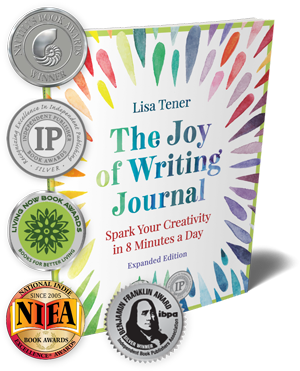 I’d like to share a story about my recent experience with simplicity because it points to a powerful strategy for book writing.
I’d like to share a story about my recent experience with simplicity because it points to a powerful strategy for book writing.
Every year when I send out the welcome letter for my Bring Your Book to Life© Program, I apologize for the length and quantity of information contained! There’s just so much I need to impart about how to schedule the consultations with me, the questionnaire to fill out, what participants get with the program, how the optional accountability partner system works–and how to make it especially effective for you…the list goes on.
The complexity troubled me. Even after cutting out the information on bonus items and leaving that for a later date, there was just way too much info.
 Then, I stumbled upon a book at the library, John Maeda’s The Laws of Simplicity, published at my Alma Mater (MIT Press). John got me thinking about how to simplify the process from class participants’ point of view. Rather than trying to give them everything at once, I thought about how they could access what they needed as needed and have one easy place to find the information when they most needed it.
Then, I stumbled upon a book at the library, John Maeda’s The Laws of Simplicity, published at my Alma Mater (MIT Press). John got me thinking about how to simplify the process from class participants’ point of view. Rather than trying to give them everything at once, I thought about how they could access what they needed as needed and have one easy place to find the information when they most needed it.
We now have a private, members-only website where they can access all information on the class! It seems obvious now. Why didn’t I think of that before? I know the answer to that one: I’d been thinking in linear terms. They sign up; they get all the info. But life doesn’t occur linearly, really.
They sign up. They are busy. They maybe glance at the letter. Then it’s time to sign up for their consultation. Where is that letter? Can they even find it in their inbox? Or they want to send me their first 10 pages of writing to get some feedback. Do they even remember that there’s a format to follow? Probably not, but they can remember that there’s a website that has all the information they need and, perhaps, they’ve bookmarked the website so they can go there easily.
3 Big Mistakes in Book Writing…and How to Fix Them
So, how does that relate to book writing? When I receive a first draft of a self-help book from someone who has not gone through my Bring Your Book to Life© Program, I often find that the author has written from their point of view: Here’s what happened to me; here’s what you need to know. Sounds simple, but it’s not necessarily in the optimal format for the reader to make use of or even enjoy.
The Big Mistakes are:
1. Organizing for You: Instead Put Yourself in Your Readers’ Moccasins
s. Starting by Teaching: Instead, start by connecting.
3. Over complicating: Ask yourself, “Is this clear to readers?” If you don’t know, ask them if they get confused by it. Ask how you can make it clearer and simpler.
With a self-help book, start with where the reader is. When you understand your readers’ thoughts, problems and needs, you can meet them where they are. Help them see that you “get” them. Then share a bit about how you’ve helped others solve similar problems to theirs. Or how you’ve done that for yourself. Don’t start teaching before your readers have even decided whether they are on board. Give them a reason to read. Click Here to Tweet this.
Then, you can start teaching, but start with what they want to know, not what you want them to know. Or start with something that will invite them to read further–something counterintuitive, exciting, curious, unlikely, promising or even bizarre. Draw your readers in just as you would with fiction. You can find more on how to think like your readers here.
And, may I reiterate? Keep it simple. I recently read a manuscript that was structured by both 3 main points that the author promised to share, but then the text focused on several lessons before we ever reached the 3 points. I kept mistaking the lessons for the points, which made the experience both confusing and a bit frustrating in an otherwise enlightening text. Subcategories can be appropriate but make it simple and clear.
Do you have any questions about how to simplify or think like your reader? Ask here as a comment or share your insights and ideas as well.


